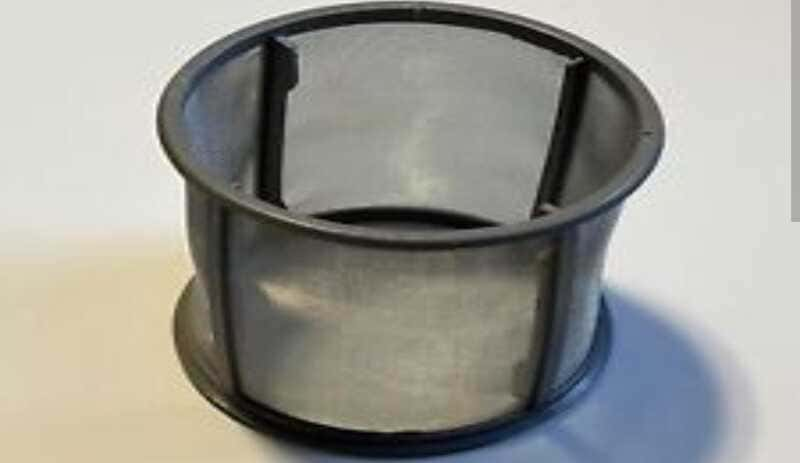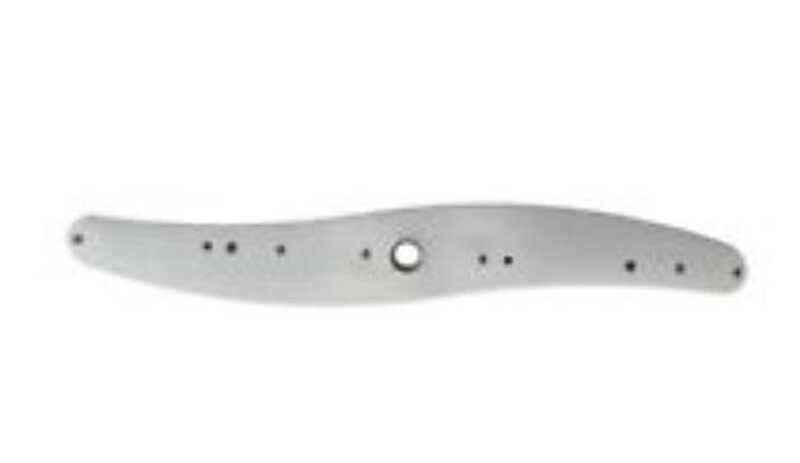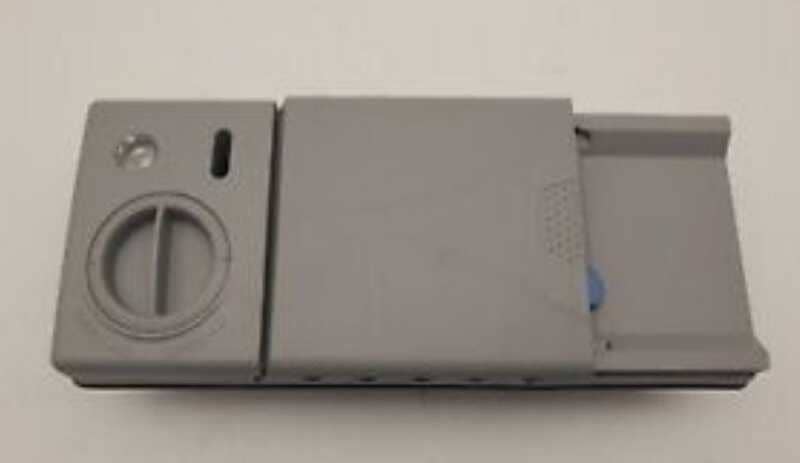A dishwasher is one of the most useful tools in a modern kitchen, as it allows us to save time and effort in cleaning dishes and cooking utensils. However, when the dishwasher is not working properly, it can be a major inconvenience and a source of frustration.
One of the most common problems with Samsung dishwashers is when they fail to clean properly, leaving dirty dishes after the wash cycle. Fortunately, in most cases, these problems can be solved with some simple and quick solutions, without having to spend money on expensive repairs or buying a new dishwasher.

In this article, we’ll show you how to fix a Samsung dishwasher that won’t clean, so you can get back to enjoying flawless dishwashing without worry.
Introduction to the Samsung dishwasher and its key components.
The Samsung dishwasher is an essential tool for any busy household. This appliance is capable of efficiently cleaning large amounts of dishes and cookware in a short period of time, saving time and effort on manual cleaning. However, when a Samsung dishwasher fails to clean properly, it can be a source of frustration and problems in the home.
To understand how to fix a Samsung dishwasher that does not clean properly, it is important to know the key components of the appliance. The Samsung dishwasher is made up of several important elements, including the spray arm, filter, detergent dispenser, water softener and circulation pump.
The spray arm is responsible for dispersing water and detergent throughout the dishwasher during the wash cycle. The filter is responsible for removing food debris and other debris from the dishes and preventing clogging of the tubes and circulation pump. The detergent dispenser is responsible for releasing detergent at the right time during the wash cycle, while the water softener helps reduce water hardness for better cleaning results. Finally, the circulation pump is responsible for circulating water and detergent through the dishwasher during the wash cycle.
Understanding these key Samsung dishwasher components is critical to being able to troubleshoot and fix a Samsung dishwasher that is not cleaning properly. In the following paragraphs, we will explore some of the common problems that can arise with these components and how to troubleshoot them to ensure your Samsung dishwasher is operating optimally.
Symptoms of a Samsung dishwasher that does not clean properly.
In order to properly develop a procedure on how to fix a Samsung dishwasher that does not clean we must first identify the symptoms of this unfortunate event. When a Samsung dishwasher does not clean properly, it is easy to spot the symptoms of this problem. One of the most obvious symptoms is dirty dishes and cookware coming out of the dishwasher after the wash cycle. If you notice stains, food debris and dirt on your dishes after the wash cycle, it’s a sure sign that something is wrong with your Samsung dishwasher.
Another common symptom of a Samsung dishwasher that is not cleaning properly is a bad smell. If your dishwasher smells bad after a wash cycle, it is likely that there is food and other debris inside the appliance. This may be due to a blockage in the filter or drain pipes.
It is important to note that it is not always obvious that your Samsung dishwasher is not cleaning properly. Sometimes, the symptoms can be subtler. For example, if you notice that your dishes are not as clean as they used to be or if you need to wash them again by hand, this could be a sign that something is not working properly in your Samsung dishwasher.
It’s crucial to pay attention to these symptoms and act quickly to fix the problem. Ignoring the symptoms of a Samsung dishwasher that is not cleaning properly can lead to major problems and the need for costly repairs or even the purchase of a new dishwasher. In the following paragraphs, we’ll explore some of the common causes of this problem and how to fix them so you can get back to enjoying flawless dishwashing without worry.
Common causes of a Samsung dishwasher not cleaning properly.
There are several common causes of a Samsung dishwasher not cleaning properly. One of the most common causes is a clogged spray arm. If the spray arm is clogged with food debris or other debris, it will not be able to spray water and detergent properly on the dishes and cookware. To fix this problem, you must disassemble the spray arm and clean it thoroughly to remove any clogs.
Another common cause of a Samsung dishwasher not cleaning properly is a dirty or clogged filter. If the filter is dirty or clogged, it will not be able to remove food debris and other debris from dishes and cookware. This can prevent water and detergent from reaching the dishes properly and cause unpleasant odors. To fix this problem, you should disassemble the filter and clean it thoroughly to remove any blockages.
A lack of water softener can also be a common cause of a Samsung dishwasher not cleaning properly. Hard water can prevent the detergent from working properly and reduce its effectiveness. If your Samsung dishwasher does not have a built-in water softener, consider installing one to improve the water quality and thus the cleanliness of your dishes.
Finally, another common cause of a Samsung dishwasher not cleaning properly is a faulty circulation pump. If the circulation pump is not working properly, water and detergent will not be able to properly circulate through the dishwasher, which can result in poor cleaning. If this is the problem, you will need to replace the circulation pump to fix the problem.
Steps to troubleshoot and repair a Samsung dishwasher that won’t clean properly.
Here are several troubleshooting steps you can follow to fix the problem of how to fix a Samsung dishwasher that won’t clean.
First, you should check the spray arm and filter to make sure they are not clogged or dirty. If they are, take them apart and clean them carefully to remove any clogs or dirt.
If the problem persists after cleaning the spray arm and filter, consider adding a water softener if your Samsung dishwasher does not have one built in. Hard water can reduce the effectiveness of detergent and cause poor cleaning.
Another important step is to make sure you are using the right detergent and in the right amount. If you use too much or too little detergent, or if the detergent you are using is not the right detergent for your Samsung dishwasher, it can negatively affect its cleaning performance.
Also, check that the spray arms are rotating freely and are not clogged. If the spray arms are clogged, they may not spray water and detergent properly, resulting in poor cleaning.
If the problem persists after performing all of these steps, you may need to replace the circulation pump. This is a more advanced step that will require the help of an appliance repair professional.
Samsung dishwasher filter check.
Checking the filters on your Samsung dishwasher is an important part of regular maintenance to make sure it’s working properly. Filters help prevent food debris and
other debris from clogging the drain and pump, which can cause problems such as poor cleaning or a leak.

In most Samsung dishwasher models, there are two types of filters: the mesh filter and the drum filter. The mesh filter is usually located at the base of the dishwasher, while the drum filter is located at the bottom of the spray arm.
To check the mesh filter, simply lift up the bottom basket and remove the filter from the base of the dishwasher. Clean it with running water and a soft brush to remove any debris or dirt.
To check the drum filter, first remove the lower spray arm and then the drum filter. Clean it with running water and a soft brush to remove any debris or dirt.
It is important to check the filters of your Samsung dishwasher regularly, especially if you noticed that the cleaning of the dishes is not adequate. If the filters are clogged, water may not circulate properly and dishes may not be cleaned properly.
In general, it is advisable to check the Samsung dishwasher filters at least once a month. If the dishwasher is used frequently or if you have a large family, you may need to check the filters more often.
Cleaning the spray arm of the Samsung dishwasher.
The spray arm is an important part of the Samsung dishwasher, as it is responsible for distributing water and detergent over the dishes for proper cleaning. If the spray arm is dirty or clogged, it can negatively affect the cleaning performance of the dishwasher.

To clean the Samsung dishwasher spray arm, you must first remove it from the dishwasher. On most models, the spray arm can be easily removed by lifting it up and turning it counterclockwise.
Once you have removed the spray arm, inspect it for obstructions. If you find any obstructions, you can clean them with running water and a soft brush to remove any debris or dirt.
It is also a good idea to make sure the spray arm orifices are clear and unobstructed. You can use a wire or paper clip to clear any obstructions in the holes.
Once you have cleaned the spray arm, be sure to put it back in place correctly. Make sure it is securely fastened and rotates freely.
It is recommended that you clean the spray arm of your Samsung dishwasher at least once a month. If the dishwasher is used frequently or if you have a large family, you may need to clean the spray arm more often.
Cleaning the detergent dispenser and water softener.
The detergent dispenser and water softener are important components of the Samsung dishwasher. If not properly cleaned, they can accumulate debris and become clogged, which can negatively affect the dishwasher’s performance.

To clean the Samsung dishwasher detergent and water softener dispenser, you must first remove it from the dishwasher. On most models, the dispenser can be easily removed by lifting it up and pulling it out.
Once you have removed the dispenser, inspect the tray and detergent compartment for any residue or dirt buildup. You can clean the tray and detergent compartment with warm water and mild soap to remove any residue or dirt buildup.
It is also advisable to inspect and clean the water softener compartment. If salt buildup is present, you should clean the compartment with warm water and a soft brush to remove any salt buildup.
Once you have cleaned the detergent and water softener dispenser, be sure to put it back in place correctly. Make sure it is securely fastened and that there are no detergent or water leaks.
It is recommended that you clean the detergent dispenser and water softener of your Samsung dishwasher at least once a month. If the dishwasher is used frequently or if you have a large family, you may need to clean it more often.
Conclusion and additional recommendations to keep your Samsung dishwasher working properly.
In conclusion, a Samsung dishwasher that doesn’t clean properly can be a frustrating problem, but there are several solutions you can try before calling a technician. From checking the filters to cleaning the spray arm, detergent dispenser and water softener, and performing regular maintenance, there are several ways to make sure your Samsung dishwasher is working properly.
It is important to remember that regular dishwasher maintenance is key to ensuring that your dishwasher is working properly. Some additional recommendations include:
– Clean the exterior of the dishwasher regularly with a soft, damp cloth to prevent dirt and grease buildup.
– Don’t overload the dishwasher, as this can prevent water and detergent from reaching all areas of your dishes.
– Use quality detergent and follow the manufacturer’s instructions for best cleaning results.
– Perform regular maintenance on your water softener if you live in an area with hard water, as this can prevent mineral buildup in your dishwasher.
If all of these steps do not solve your Samsung dishwasher cleaning problem, consider calling a technician for a professional checkup and diagnosis.
By following these recommendations, you can keep your Samsung dishwasher in good condition and working optimally to keep your dishes clean and shiny.

